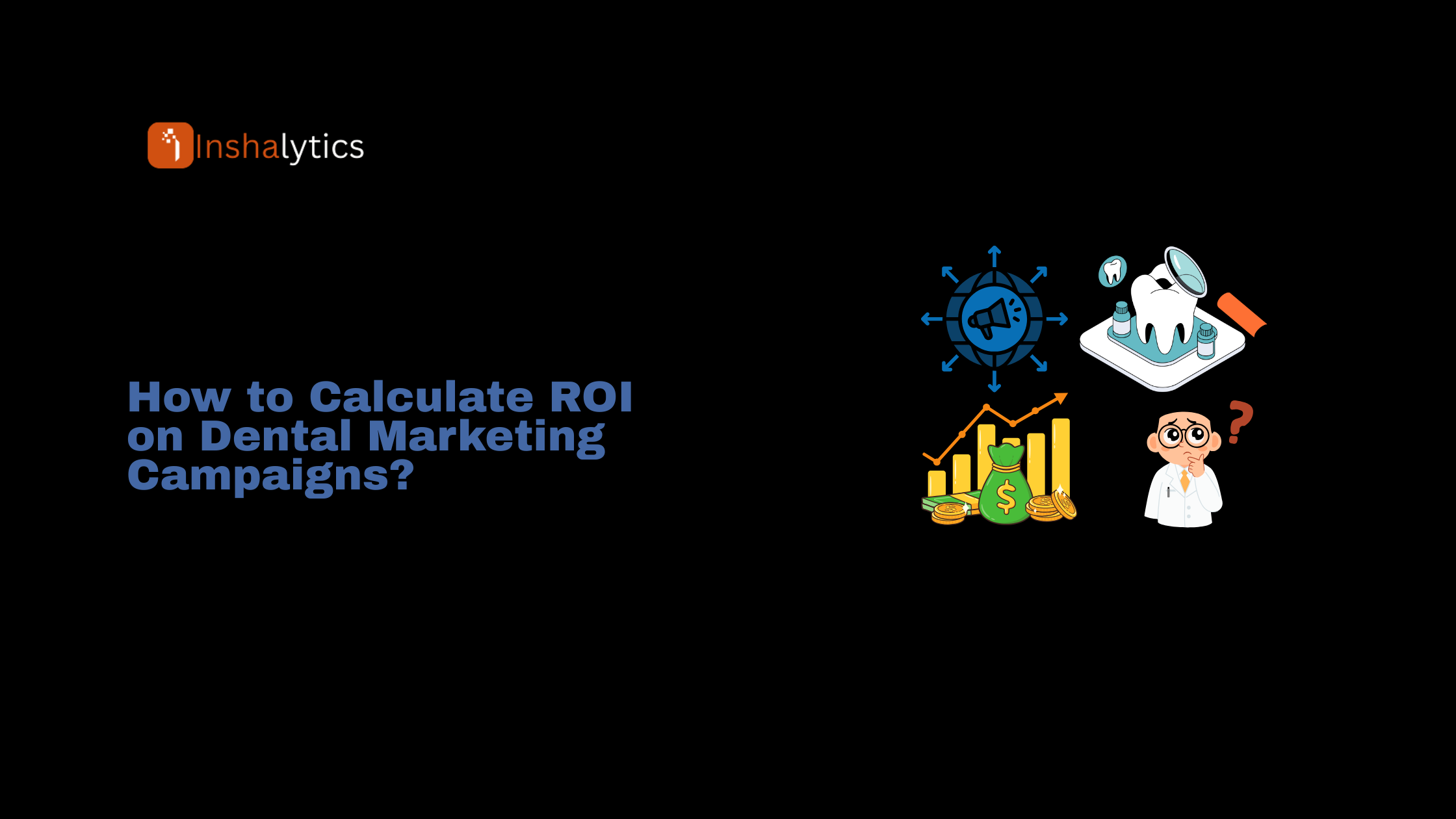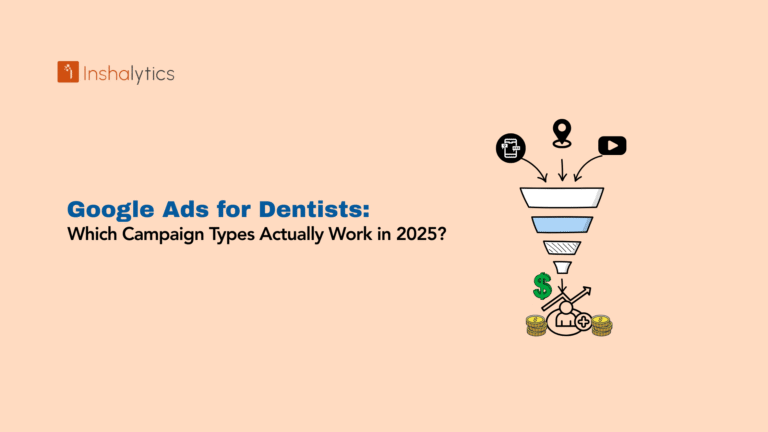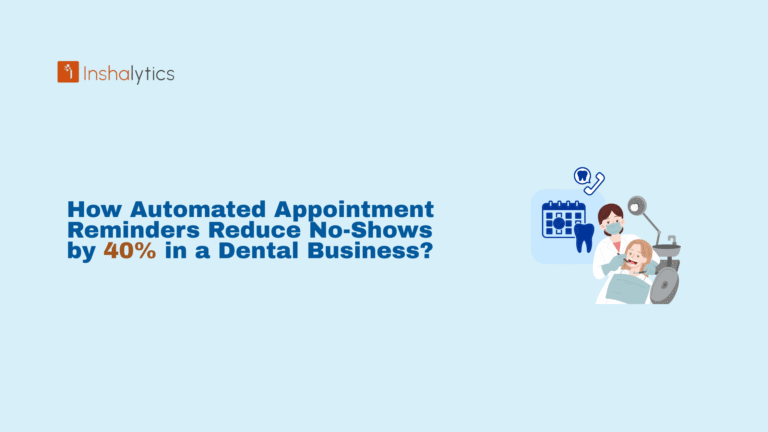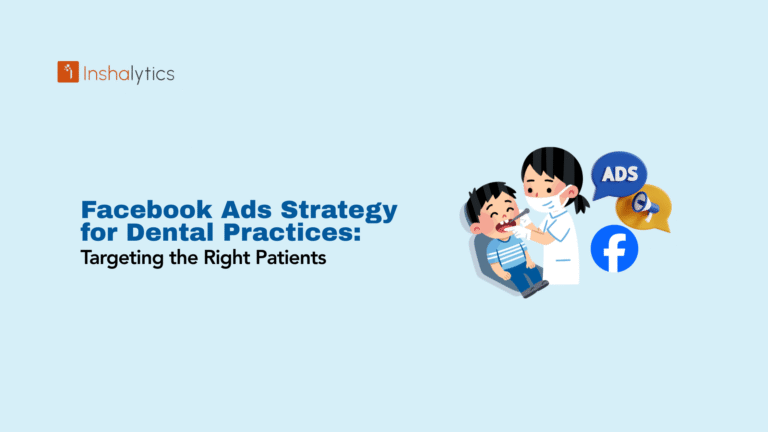Understanding the return on investment from your dental marketing efforts isn’t just about tracking numbers—it’s about making informed decisions that drive sustainable practice growth. In this comprehensive guide, we’ll walk you through proven formulas, essential metrics, and actionable strategies to calculate and optimize your dental marketing ROI.
What is Dental Marketing ROI and Why Does It Matter?
Definition of ROI in Dental Marketing
Return on Investment (ROI) in dental marketing measures the profitability of your marketing campaigns relative to their cost. Simply put, it tells you how much revenue you’re generating for every dollar spent on marketing activities. This metric helps you distinguish between marketing expenses that drive growth and those that drain resources without delivering results.
Unlike general business metrics, dental marketing ROI requires consideration of patient lifetime value, referral patterns, and the longer sales cycles typical in healthcare services. A patient acquired today might represent thousands of dollars in revenue over multiple years.
Why Tracking ROI is Critical for Practice Growth
Without accurate ROI tracking, you’re essentially flying blind with your marketing budget. You might be investing heavily in channels that bring price-shopping, one-time patients, while neglecting strategies that attract loyal, high-value patients who return regularly and refer others.
Tracking ROI enables you to make data-driven decisions about budget allocation, identify which marketing channels deliver the best results, forecast future revenue based on current patient acquisition trends, and justify marketing investments to partners or stakeholders in your practice.
The Basic Dental Marketing ROI Formula
Simple ROI Calculation Method
The most straightforward way to calculate marketing ROI uses this formula:
ROI = (Revenue – Marketing Cost) / Marketing Cost × 100
This calculation gives you a percentage that represents your return. For instance, if you spent $1,000 on marketing and generated $3,500 in revenue from new patients, your calculation would be:
ROI = ($3,500 – $1,000) / $1,000 × 100 = 250%
This means you earned $2.50 for every dollar invested in marketing.
Example: Calculating ROI from a Facebook Ad Campaign
Let’s apply this to a real scenario. Your practice runs a Facebook advertising campaign for teeth whitening services. You invest $800 in ads over one month and attract 8 new patients through the campaign. Each patient spends an average of $400 on their initial whitening treatment.
Your calculation becomes:
- Revenue: 8 patients × $400 = $3,200
- Cost: $800
- ROI = ($3,200 – $800) / $800 × 100 = 300%
This represents a strong immediate return. However, this basic formula doesn’t account for the long-term value these patients might bring to your practice.
Advanced ROI Calculation: Patient Lifetime Value (LTV) Method
What is Patient Lifetime Value?
Patient Lifetime Value represents the total revenue a single patient generates throughout their entire relationship with your practice. This includes all appointments, procedures, and treatments from their first visit until they stop being an active patient.
Understanding LTV transforms how you evaluate marketing effectiveness. A patient who seems expensive to acquire might actually be highly profitable when you consider their long-term value.
How to Calculate Patient Lifetime Value Step-by-Step
To calculate accurate LTV, you need several data points:
Step 1: Calculate Average Annual Value Per Patient: Add up your total practice revenue for the year and divide by your number of active patients. If you generated $750,000 with 500 active patients, your average annual value is $1,500.
Step 2: Determine Average Patient Retention Period: Calculate how many years patients typically stay with your practice. Industry data suggests 7-10 years is typical, but track your own numbers. If 8.3% of your patient base becomes inactive each year, divide 100 by 8.3 to get approximately 12 years of average retention.
Step 3: Calculate Basic LTV: Multiply average annual value by average retention period: $1,500 × 12 years = $18,000 per patient
Step 4: Factor in Referral Value: Calculate how many patients each active patient refers annually. If you receive 30 referrals per year from 500 active patients, that’s a 6% referral rate. Multiply this by the LTV to get referral value: $18,000 × 0.06 × 12 years = $12,960 in referral value
Step 5: Calculate Total LTV: Add the direct value and referral value: $18,000 + $12,960 = $30,960 total lifetime value per patient
Formula: (LTV × New Patients) – Marketing Cost = ROI
Using the comprehensive LTV calculation, your ROI formula becomes more accurate:
ROI = [(LTV × Number of New Patients) – Marketing Cost] / Marketing Cost × 100
If you spent $3,000 on marketing in a month and acquired 5 new patients with an LTV of $18,000:
ROI = [(5 × $18,000) – $3,000] / $3,000 × 100 = 2,900%
This dramatically different result shows why long-term thinking matters in dental marketing.
Key Metrics You Must Track for Accurate ROI
Cost Per Acquisition (CPA)
CPA tells you how much you’re spending to acquire each new patient. Calculate it by dividing total marketing spend by the number of new patients acquired. If you spent $2,000 and gained 10 new patients, your CPA is $200.
Industry averages for dental practices range from $65 to $300 per new patient, depending on your location, competition, and services offered. Tracking CPA by marketing channel helps identify your most efficient acquisition sources.
Conversion Rate from Leads to Patients
Not everyone who contacts your practice becomes a patient. Your conversion rate measures the percentage of inquiries that turn into scheduled appointments. If you receive 100 phone calls and 34 become patients, your conversion rate is 34%.
A low conversion rate often indicates front desk training needs or poor lead quality rather than marketing effectiveness. Many practices lose potential patients due to inadequate phone skills or scheduling friction.
Patient Retention Rate
Retention rate shows what percentage of patients return within a specific timeframe, typically 18 months. Calculate it by dividing active returning patients by total patients from the previous period.
Since acquiring new patients costs approximately six times more than retaining existing ones, retention directly impacts your ROI. A practice with an 83% retention rate performs significantly better than one with 70% retention.
Average Transaction Value
This metric represents how much revenue each patient visit generates. Track this separately for new patients versus existing patients, and by service type. Some practices discover that certain marketing campaigns attract patients interested only in low-value cleanings, while others bring patients seeking comprehensive care.
Referral Rate and Secondary Referral Value
Your referral rate indicates what percentage of patients actively recommend your practice. Beyond tracking the number of referrals, calculate the revenue they generate. A single patient who refers five family members might contribute an additional $40,000 in lifetime value beyond their own treatments.
Short-Term vs. Long-Term ROI: Which Should You Track?
Understanding Short-Term Campaign ROI
Short-term ROI focuses on immediate returns from specific campaigns or channels. This approach works well for comparing the effectiveness of different advertising platforms or promotional offers. A direct mail campaign’s short-term ROI shows whether it generated enough immediate appointments to justify the cost.
However, short-term metrics can be misleading. They don’t capture the full value of patient relationships or account for the time needed for certain marketing strategies to mature.
Why Long-Term ROI Provides Better Insights?
Long-term ROI considers the complete patient lifecycle, including repeat visits, treatment acceptance, and referrals. This perspective reveals the true impact of your marketing investments and prevents premature abandonment of strategies that need time to deliver results.
Most marketing tactics require at least three months to show meaningful activity. SEO efforts might need six to twelve months before generating substantial returns. Evaluating campaigns too early often leads to poor decisions.
Industry Benchmark: Aiming for 3:1 to 10:1 ROI
Dental industry standards suggest a minimum ROI of 3:1, meaning you should earn at least three dollars for every dollar spent on marketing. Many successful practices achieve 5:1 or higher. When factoring in long-term patient value, ROI ratios of 8:1 to 10:1 become realistic targets.
Anything below 3:1 deserves investigation. You might be targeting the wrong audience, suffering from poor conversion processes, or investing in ineffective channels.
How to Track ROI Across Different Marketing Channels?
Tracking SEO and Organic Search ROI
SEO presents unique tracking challenges because results accumulate over time. Use tools like Google Analytics and Google Search Console to monitor organic traffic, keyword rankings, and conversions from organic search. Track the number of new patient appointments attributed to organic search discoveries each month.
Calculate SEO ROI by comparing your SEO investment (agency fees, content creation, technical improvements) against revenue from patients who found you through organic search. Since SEO delivers compounding returns, measure it over 12-month periods rather than monthly.
Measuring PPC and Google Ads Performance
Pay-per-click advertising offers the most straightforward tracking. Enable conversion tracking in Google Ads to see exactly how many form submissions and phone calls your ads generate. Connect your practice management software to identify which calls became scheduled appointments.
Your PPC ROI calculation should include all ad spend plus any management fees. Calculate cost per click, cost per lead, and ultimately cost per acquired patient to assess campaign efficiency.
Social Media Marketing ROI
Social media ROI requires tracking both paid advertising and organic content efforts. For paid social campaigns, use platform pixel tracking and UTM parameters to follow users from ad to appointment. Monitor metrics like reach, engagement rate, click-through rate, and conversion rate.
For organic social media, track follower growth, engagement patterns, and direct inquiries received through social channels. While harder to quantify, organic social media builds brand awareness that supports other marketing channels.
Direct Mail and Traditional Marketing ROI
Traditional marketing requires creative tracking solutions. Use unique phone numbers for each campaign through call tracking software. Create specific promotional codes or landing pages mentioned only in particular mailings. Train your front desk team to consistently ask new patients how they heard about your practice.
Despite digital dominance, direct mail can deliver a strong ROI in certain markets, particularly for reaching older demographics or households in specific zip codes.
Call Tracking and Attribution Software
Modern call tracking solutions provide “whisper messages” that inform your staff which marketing source generated each call before they answer. This technology eliminates guesswork and provides precise attribution data.
Advanced platforms integrate with your practice management software to track the complete patient journey from first contact through treatment completion, showing exactly which marketing dollars produce revenue.
Common Mistakes When Calculating Dental Marketing ROI
Ignoring Patient Attrition Rates
Many practices celebrate acquiring 50 new patients while overlooking the 60 patients who became inactive during the same period. Net patient growth (new patients minus lost patients) provides a more accurate picture of marketing effectiveness. High attrition undermines even the best acquisition campaigns.
Not Accounting for Opportunity Costs
Basic ROI formulas ignore opportunity costs—the potential returns you sacrifice by choosing one marketing strategy over another. If you could have invested marketing dollars in a strategy delivering 400% ROI but chose one delivering 200% ROI, the opportunity cost significantly impacts your real return.
Overlooking Referral Value in Calculations
Patient referrals represent some of the highest-value acquisitions because they come with built-in trust and typically cost nothing to acquire. A referral-focused patient might not generate impressive immediate revenue but could bring multiple family members who become long-term patients.
Using Inflated or Incomplete Data
Accurate ROI calculations require honest, complete data. Some practices inflate patient numbers by counting inquiries rather than scheduled appointments. Others fail to track patients who saw the ad but called weeks later. Implement systematic tracking from initial contact through treatment completion.
How to Improve Your Dental Marketing ROI?
Reduce Patient Acquisition Costs
Lower acquisition costs directly improve ROI. Optimize your Google Ads campaigns by focusing on long-tail keywords with high intent, such as “emergency dentist open now” rather than broad terms like “dentist.” Improve your website conversion rate through clear calls-to-action, mobile optimization, and fast loading speeds.
Leverage local SEO by claiming your Google Business Profile, collecting patient reviews, and ensuring NAP (name, address, phone) consistency across online directories.
Increase Patient Lifetime Value
Boost LTV by improving patient retention through recall systems, loyalty programs, and exceptional service. Offer membership plans for uninsured patients to encourage ongoing relationships. Cross-sell and upsell appropriate services when clinical needs justify them.
Focus on patient education to increase treatment acceptance rates. Patients who understand the value of recommended treatments are more likely to proceed, increasing their lifetime revenue contribution.
Optimize Conversion Rates at Your Front Desk
The best marketing in the world fails if your front desk can’t convert inquiries into appointments. Invest in phone skills training, implement scripts for handling common questions and objections, and ensure scheduling flexibility to accommodate patient preferences.
Mystery shop your own practice to identify conversion bottlenecks. Many practices discover their phone isn’t answered promptly or staff lack enthusiasm and product knowledge.
Focus on High-Value Services and Procedures
Not all patients deliver equal value. Marketing campaigns targeting cosmetic dentistry, implants, or full-arch restorations attract higher-value patients than general cleaning promotions. While routine care builds relationships, high-value procedures significantly impact practice profitability.
Analyze which services generate the highest profit margins and create targeted campaigns to attract patients seeking those treatments.
What’s a Good ROI for Dental Marketing?
A positive ROI represents your starting point—you’re generating more revenue than you’re spending. However, merely breaking even doesn’t justify the effort and opportunity cost of marketing activities.
Target a minimum 3:1 ratio for short-term campaign ROI and 5:1 for sustained marketing efforts. Excellent performance reaches 8:1 to 10:1 when you factor in patient lifetime value. These benchmarks vary based on your practice type, location, and service mix.
Specialty practices offering high-value procedures often achieve higher ROI ratios because each patient acquisition brings substantially more revenue. General practices might see lower ratios but higher patient volumes.
If your ROI consistently falls below 3:1, investigate whether you’re targeting the wrong audience, suffering from poor conversion processes, or investing in the wrong channels. Sometimes the solution isn’t abandoning marketing but fixing the broken links in your patient acquisition system.
Key Takeaways
Calculating ROI on dental marketing campaigns requires looking beyond simple formulas to understand the complete patient lifecycle. Track both immediate campaign returns and long-term patient value to make informed marketing decisions.
Focus on metrics that matter: cost per acquisition, conversion rates, patient lifetime value, retention rates, and referral patterns. Use call tracking and analytics tools to gather accurate attribution data across all marketing channels.
Remember that marketing is a marathon, not a sprint. Allow at least three months before evaluating campaign success, and consider that strategies like SEO and content marketing deliver compounding returns over time.
The most successful dental practices don’t just calculate ROI—they use these insights to continuously optimize their marketing mix, reduce waste, and invest more heavily in channels that deliver the highest returns. Start tracking today, and you’ll make smarter marketing decisions that drive sustainable practice growth.




